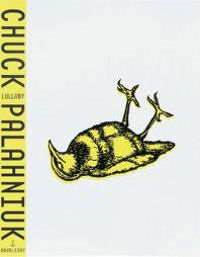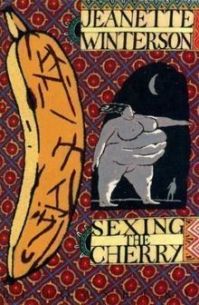
Author: Jennifer Egan
Winner: 2011 Pulitzer Prize for Fiction, 2010 National Book Critics Circle Award, 2010 LA Times Book Prize for Fiction, 2010 Salon Book Award for Fiction, 2011 Tournament of Books Winner, 2010 NYT Notable Book of the Year, 2011 ALA Notable Book
New York Times Bestseller
Original Publication: 2010
Genre: Fiction
Appears on “1,001 Books to Read Before You Die”, 2012 Edition
In 1979 San Francisco, the punk scene is burgeoning and Bennie, Scotty, Jocelyn, Rhea, and their friends are on the front lines. Bennie and Scotty are the leaders of the Flaming Dildos, a band hopeful of making it big among the likes of their local idols Flipper, The Nuns, and the Dead Kennedys. If the lyrics to the Butthole Surfers’ “Pepper” had a literary equivalent, this novel would be it.
“Marky got with Sharon, Sharon got Charice, she was sharin’ Sharon’s outlook on the topic of disease. Mikey had a facial scar and Bobby was a rapist, they were all in love with dyin’, they were doing it in Texas. Tommy played piano like a kid out in the rain and then he lost his leg in Dallas, he was dancin’ with a train. They were all in love with dyin’, they were drinking from a fountain that was pouring like an avalanche, comin’ down the mountain.” – The Butthole Surfers, “Pepper”
The book begins in present-day with Sasha, Bennie’s sticky-fingered assistant. Bennie now owns his own record label, which is floundering due to his raw sensibilities not aligning with the popular trends. Scotty, once called “the only truly angry one of the bunch”, has disappeared into obscurity. Each chapter is told by a different character, and serves to illustrate the rise and fall of each, against the backdrop of the rise and fall of punk music. Each character is part of Bennie or Sasha’s past, present, or future, and the novel spans about fifty years, well beyond present day.
We follow the characters from San Francisco to New York City, from Italy to Kenya as they age out of their youthful idealism, explore what it means to each to “sell out”, and cross into the bewilderment of the seasoned musician with the present-day music scene – what happened to the idealism? The rebellion? What happened to the creativity and artistry? What have we become? The entire book is heartbreaking in the best way, largely because Egan is such a gifted writer that each character feels a little TOO human, and their thoughts and actions hit frighteningly close to our imperfect natures. As a fellow aging punk musician, I could empathize with the fond remembrances of a life that exists now only in memory.
The last chapter, set in a terrifying dystopian near future, finds that Bennie – now elderly and no longer at the top of his game – has tracked down a decaying Scotty and decided to make him famous. Society lives entirely on their cell phones, communicating solely in text-speak, and the music scene died long ago, only to be resurrected and aimed at children. Bands like Nine Inch Nails have reinvented themselves to appeal to toddlers in a bid to stay relevant. The human race, after decades of war and big-brother surveillance, is lost and brainwashed; despite movements for truth on the internet. Liars and paid bloggers have been shamed and shunned. Bennie knows that there is no way that he can drum up enough publicity for Scotty’s show, so he hires a team of blind parrots – social media experts whom he knows are easily bought – to promote the event. He knows that his reputation will be shot and he will be drummed out of what’s left of his business if he is found out, but the blind parrots do their job and the people of New York City wander to the free show in droves to see Scotty play. Part of what draws them is the promise of a slide guitar – most people have never seen a real musical instrument played live in their lifetimes. Scotty panics and nearly can’t play – especially the new songs he had engineered for the children – but instead plays the subversive, three-chord, angry punk rock songs he has been writing his entire life. The crowd – men, women, and children alike – listen agape as if being given their first sip of water after forty years in the desert. Punk rock, like the Phoenix, rises from the ashes and again becomes the voice of the disenfranchised; of those who would change the status quo.
Fun Fact: “Goon squads” were originally groups of violent thugs who would beat up anyone opposed to certain labor unions and corrupt political machines. Later the term “goon” came to refer more generally to any violent thug, and this is where the book draws its central metaphor. In one story, a character named Bosco declares: “Time’s a goon, right?”, referring to the way that time and fate cruelly rob most of the book’s characters of their youth, innocence and success. As Bosco complains: “How did I go from being a rock star to being a fat fuck no one cares about?” Egan said the story was inspired by two sources: Proust’s In Search of Lost Time, and HBO’s The Sopranos.
Bother If: I thought this was an amazingly well-written story, and I don’t think my punk rock background and nostalgia for the old school, so to speak, has colored my glasses in that regard. Certainly people with some familiarity with popular music over the past fifty years will get more out of the story. Despite having “given away the ending” above, it’s not the ending that makes the story worth reading. The book isn’t about the resurgence of punk rock in a dystopian future, although I found that part to be delicious. The story is about people, finding their way through the world and wondering where time went, or finding their way into the world via music. Each character is us, in their way. They’re each so intricately written that you genuinely care about them, and you recognize in yourself the ways that each compromises along the way. Bennie and Scotty are merely part of the larger story – I haven’t touched on how wonderful each character is, and how uniquely voiced. The story is also a solid metaphor for the current state of the music industry. Music is increasingly written by social engineers and aimed at the tween crowd. Live instruments are becoming more rare, and the artists elevated for their star quality and marketability rather than talent, innovation, and creativity. Goon Squad carries this practice to its logical (but hopefully not foregone) conclusion, where all music is marketed toward the youngest demographic / lowest common denominator, and all originality is gone.
Don’t Bother If: The novel is told by a different character in each chapter (although they are all interrelated). Some people dislike that style of writing or find it jarring or confusing. The book also does not make it clear who is speaking by the chapter names – you find out a page or two in, by the context. The novel also jumps between time periods, which one also must figure out by the context. There are also depictions of sex, drug use, adultery, prostitution, etc, although all are very much part of the experience of the story and not graphically told. Needless to say, don’t bother if the subject matter doesn’t interest you; but if you’re ambivalent about it, object to nothing above, and enjoy a great story, this one is worth a read.










